Space

Jul 17th, 2025 - Astronomers using the James Webb Space Telescope (JWST) found a fully formed spiral galaxy, Zhúlóng , at redshift 5.2, meaning its light left only one billion years after the Big Bang. At that epoch the Universe was about seven percent of its current age, yet the galaxy already shows a dense stellar bulge, sweeping spiral arms more than 62,000 light‑years across, and a mass on par with the Milky Way. Christina Williams of NSF NOIRLab , who co‑leads the ... [Read More]
Source: earth.com
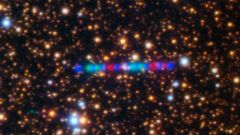
Jul 17th, 2025 - New photos, including a striking technicolor timelapse, show off the newly discovered interstellar object 3I/ATLAS as it shoots toward us through the solar system. The newly discovered "interstellar visitor" 3I/ATLAS can be seen shining like a rainbow-colored string of cosmic pearls in a trippy new timelapse image captured by a telescope in Hawaii. The interloper was discovered on July 1 , and within 24 hours NASA confirmed it was an interstellar object — an ejected piece of an alien star ... [Read More]
Source: livescience.com

Jul 17th, 2025 - A rocky planet zips around the faint orange star WASP-132 once every 24 hours and 17 minutes. Far beyond it, a frigid gas giant drifts along a path that takes five Earth years to complete. Lead author Nolan Grieves of the University of Geneva and colleagues uncovered the pair while re‑examining nine years of telescope data. Their find shows that hot Jupiter systems can shelter nearby small planets rather than always clearing them out. Sprinting around WASP-132 The inner world, named ... [Read More]
Source: earth.com

Jul 16th, 2025 - Sign up for CNN's Wonder Theory science newsletter . Explore the universe with news on fascinating discoveries, scientific advancements and more. A collision observed between two black holes, each more massive than a hundred suns, is the largest merger of its kind ever recorded, according to new research. A team of astronomers discovered the event, dubbed GW231123, when the Laser Interferometer Gravitational-Wave Observatory (LIGO) — a pair of identical instruments located in Livingston, ... [Read More]
Source: cnn.com

Jul 16th, 2025 - For decades, scientists have puzzled over Uranus. Unlike its fellow giant planets, it seemed unusually quiet in terms of heat. When NASA's Voyager 2 spacecraft flew past the icy world in 1986, its instruments detected almost no internal warmth. That didn't make sense. Planets the size of Uranus should still be radiating heat from their formation – so where was it? Now, new research suggests the heat is there – just harder to detect. This new evidence helps resolve an old mystery and ... [Read More]
Source: earth.com
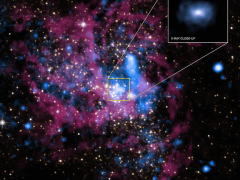
Jul 16th, 2025 - Dark matter particle and antiparticle collisions could make some stars immortal. For a star, its initial mass is everything. It determines how quickly it burns through its hydrogen and how it will evolve once it starts fusing heavier elements. It's so well understood that scientists have devised a " main sequence " that acts a bit like a periodic table for stars, correlating their mass and age with their properties. The main sequence, however, is based on an assumption that's almost always ... [Read More]
Source: arstechnica.com

Jul 16th, 2025 - Seeds of rocky planets forming in gas around star Hops-315 is called glimpse of 'time zero', when new worlds start to gel Astronomers have discovered the earliest seeds of rocky planets forming in the gas around a baby sun-like star, providing a precious peek into the dawn of our own solar system. It's an unprecedented snapshot of "time zero", scientists reported on Wednesday, when new worlds begin to gel. "We've captured a direct glimpse of the hot region where rocky planets like Earth are ... [Read More]
Source: theguardian.com

Jul 16th, 2025 - Two of the strangest structures in the galaxy just got even stranger. Ballooning above and below the Milky Way 's center like a massive hourglass, the mysterious Fermi bubbles loom large over our galaxy. These enormous twin orbs of superheated plasma have been gushing out of the galactic center for millions of years. Today, they span some 50,000 light-years from tip to tip, collectively making them half as tall as the Milky Way is long. Now, scientists studying the perplexing bubbles with the ... [Read More]
Source: livescience.com
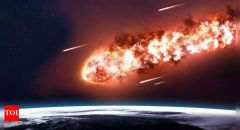
Jul 16th, 2025 - Asteroid 2022 YS5 is a building-sized asteroid that is scheduled to make a close approach to Earth on July 17, capturing the attention of astronomers, scientists, and space agencies worldwide. Estimated to be nearly 100 feet in diameter, this celestial visitor will travel faster than a speeding bullet—at over 33,000 km/h. Although the asteroid is expected to fly past Earth at a safe distance, the event underscores the increasing importance of planetary defense systems, ongoing asteroid ... [Read More]
Source: timesofindia.indiatimes.com

Jul 15th, 2025 - Discoveries keep pouring out of the James Webb Space Telescope (JWST) . Researchers observed an unusual cluster, which they dubbed the Infinity Galaxy. It appears to support a leading theory on how some supermassive black holes form. Although "Infinity Galaxy" sounds like a place Thanos would hang out, it merely describes its appearance. Two compact, red nuclei, each surrounded by a ring, give the cluster the shape of an infinity symbol. What's inside is more interesting. (After all, this is a ... [Read More]
Source: engadget.com
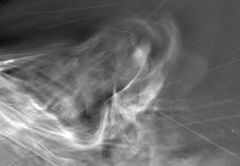
Jul 15th, 2025 - The closest-ever images of our Sun are a gold mine for scientists. Eruptions of plasma piling atop one another, solar wind streaming out in exquisite detail — the closest-ever images of our Sun are a gold mine for scientists. Captured by the Parker Solar Probe during its closest approach to our star starting on December 24, 2024, the images were recently released by NASA and are expected to deepen our understanding of space weather and help guard against solar threats to Earth. – A ... [Read More]
Source: digitaljournal.com

Jul 14th, 2025 - The Milky Way may be surrounded by dozens of yet-to-be-detected satellite galaxies, scientists claim. Using the highest-resolution simulation of our galaxy's dark matter — an invisible entity that shapes the large-scale structure of the universe — and new mathematical models, cosmologists predict that more than 100 additional satellite galaxies beyond the ones already cataloged may be swirling around our own. If those galaxies are spotted by telescopes, they could offer support for ... [Read More]
Source: livescience.com
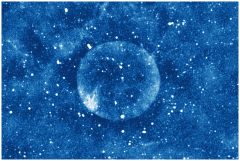
Jul 14th, 2025 - In a universe governed by turbulence and chaos, perfection is rarely more than a mathematical ideal. Yet astronomers are puzzling over a newfound object that seems to defy that rule: a glowing, nearly flawless circular shell of gas and dust, likely the remnant of a long-dead star, that has remarkably preserved its shape in a universe where such order is uncommon. Miroslav Filipović, an astronomer at the Western Sydney University in Australia, spotted the remnant while examining images ... [Read More]
Source: astronomy.com
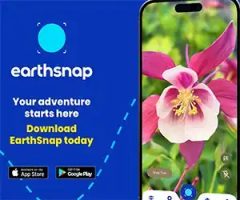
Jul 14th, 2025 - Dark, finger‑like marks slide down countless Martian cliffs each year. These stripes have prompted decades of speculation about water still trickling across the Red Planet. A new analysis of 500,000 of these features shows that they form through avalanches of dry dust, report Valentin Tertius Bickel of the University of Bern and Adomas Valantinas of Brown University . Why the Martian stripes matter For almost 50 years, scientists have puzzled over the dusky streaks that run hundreds to ... [Read More]
Source: earth.com

Jul 13th, 2025 - A model built using data from the Curiosity rover suggests wet periods were rare. The Curiosity rover was sent up the Mount Sharp, the biggest sediments stack on Mars. On the way, it collected samples that indicated a portion of carbon dioxide in the Martian atmosphere might have been sequestered in the sedimentary rocks, just as it happens with limestone on Earth. This would have drawn carbon dioxide out of the atmosphere, reducing the greenhouse effect that warmed the planet. Based on these ... [Read More]
Source: arstechnica.com

Jul 13th, 2025 - QUICK FACTS What it is: The open star clusters NGC 460 and NGC 456 Where it is: 200,000 light-years away, in the Small Magellanic Cloud dwarf galaxy When it was shared: July 7, 2025 NASA 's Hubble Space Telescope and James Webb Space Telescope (JWST) joined forces to capture a striking new view of two open star clusters within the Small Magellanic Cloud, a dwarf satellite galaxy orbiting the Milky Way. The spectacular 527-megapixel image is the result of 12 overlapping observations in visible ... [Read More]
Source: livescience.com